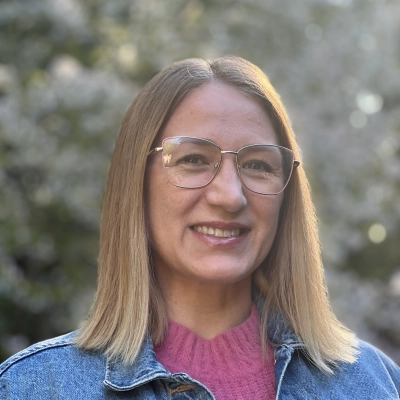4 Communication Techniques that Break Toxic Patterns in Relationships
Effective communication is the cornerstone of healthy relationships, yet many couples struggle with toxic patterns that can erode their connection. This article explores powerful techniques that can help break these destructive cycles and foster more positive interactions. Drawing on insights from relationship experts, we'll delve into practical strategies that can transform the way you communicate with your partner.
- Lead with Curiosity to Improve Communication
- Treat Your Relationship Like a Business
- Practice Active Listening for Healthier Dialogue
- Use Pause and Reflect with I-Statements
Lead with Curiosity to Improve Communication
As a psychotherapist at a New York City private practice, my favorite tip for helping couples improve their communication patterns is to lead with curiosity. This simple shift can make all the difference in how requests, needs, or feedback are received - it places you on the same team instead of against one another. For example, instead of criticizing your partner for something, framing things as investigating how you can solve this together - like "I understand and respect your need for x and my need for y, can we brainstorm what it might look like to meet in the middle on this?" or instead of "I hate that you z" saying something like "Can you help me understand this?" Curiosity leads to open sharing and ultimately increased understanding and solutions!

Treat Your Relationship Like a Business
When couples become entrenched in toxic communication patterns (i.e., constant criticism, stonewalling, or defensiveness), the first step is to shift the way they think about each other and the problem. When I work with couples, I teach them to treat their relationship like a business; this includes processes, workflows, and opportunities for optimization. Just as one wouldn't allow inefficiencies to persist in a company, one can't let toxic patterns run unchecked in a relationship.
One technique that consistently yields positive results is structured "check-in" conversations. I guide couples to set aside 30-60 minutes weekly to discuss challenges and successes with specific rules:
1. Speak in the first person ("I feel frustrated when..."), not using accusatory language.
2. Focus on observable behaviors rather than labeling the partner ("I noticed X happened" vs. "You are always...").
3. End each topic with a collaborative action step, so the conversation leads to solutions rather than spiraling into blame.
This approach interrupts negative cycles, helps both partners feel heard, and builds a new pattern of constructive dialogue. Over time, these structured check-ins become a habit, and what started as a small weekly process can transform a relationship from reactive and toxic to intentional and thriving...just like a well-run business.

Practice Active Listening for Healthier Dialogue
One of the most effective ways I help couples improve communication when they have developed toxic patterns is by teaching and practicing active listening. Research shows that poor communication is one of the leading causes of relationship breakdown, with studies indicating that nearly 65 percent of divorces are due to communication problems. Active listening involves setting aside defensive responses and focusing fully on the partner's words, tone, and emotions. I often guide couples to practice reflective statements, such as summarizing what their partner has said, which reduces misunderstandings and builds empathy.
A study published in the Journal of Marriage and Family found that couples who practiced structured communication techniques like active listening reported higher relationship satisfaction and reduced conflict. This approach not only helps partners feel heard but also lowers physiological stress responses that often fuel toxic cycles. Over time, couples begin to replace reactive patterns with more thoughtful exchanges, which strengthens trust and intimacy. While no single technique is a cure-all, consistently applying active listening creates a foundation for healthier dialogue, allowing couples to work through disagreements constructively and rebuild emotional connection.

Use Pause and Reflect with I-Statements
Hello, my name is April Crowe, LCSW. I am a Therapist at The Paramount Wellness Retreat in Connecticut. We would like to contribute to your article! Here are the links to our website, staff page and my LinkedIn:
https://www.paramountwellnesscenters.org/
https://www.paramountwellnesscenters.org/contributors/
https://www.linkedin.com/in/april-crowe-a7b47219/
Here are our answers and responses to your query:
Couples will often come to therapy demonstrating toxic communication cycles, including blame, criticism, resentment, defensiveness, stonewalling, etc. A powerful technique to break this constant cycle of toxic communication is using a "pause and reflect" method with an "I-statement". In toxic communication patterns, conversations quickly escalate since partners focus on attacking and defending rather than listening. The pause and reflect method allows couples to practice pausing before immediately responding to their partner, letting them take a few breaths and gather their thoughts. This interrupts the fight-or-flight response and provides a space to respond intentionally. This, paired with I-statements, encourages not only intentional thoughts but also a response that expresses internal feelings. For example, I-statements would look like "I feel overwhelmed" or "I feel unheard", etc., and can reframe the conversation into expressing needs and feelings. These tactics, in combination with active listening practice, where partners repeat back what they heard before replying, help to promote listening skills and reduce miscommunication. This works for couples with toxic communication styles by helping to de-escalate conflict, reduce defensiveness, increase empathy, and build emotional safety. These methods may not solve every issue between the couple, but they help to lay a foundation for mutual respect, constructive dialogue, and open communication, allowing for deeper healing.


